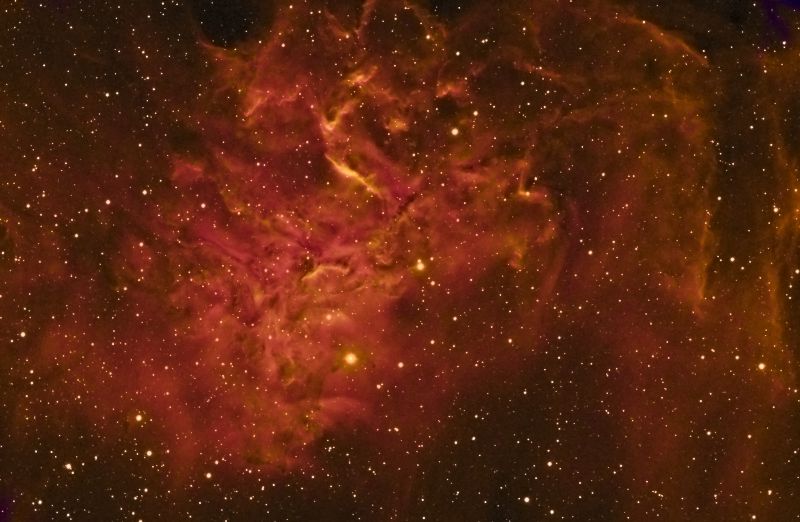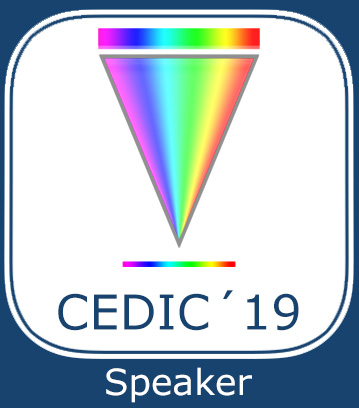Auriga is a really treasure box of bright astronomical objects: star clusters, bright nebulas and dark nebulas.
Among all IC405, The Flaming Star Nebula is one of the most photographed objects.
This image is an unusual Hα - SII bicolor composition in false color.
Hα and SII emisson lines lays both in deep red so it is impossible to render color differences in a real way: the only option is a false color composition.
In this image Hydrogen emission has the usual pinkish color due to the Hα and Hβ emission lines.
As said before the SII emission line lays in deep red, but on Earth the cristalline sulfur has yellow hues so my goal wos to render the SII in yellow.
To accomplish My Goal I've used the PixelMath tool in PixInsigth.
The composition formula was:
- R Channel: Hα
- G Channel: SII
- B Channel: 0.25*Hα - 0.75*SII
The B channel formula is very simple the 0.25*Hα acconts for the Hβ emission giving to the Hydrogen emission the usual pinkish color, subtracting the SII emission shifts the color hue of the Sulfur rich zones toward yellow the 0.75 factor is an arbitrary value chosen to render the wanted color.
All the image processing was done in PixInsight

Click here for full resolution image on AstroBin
IC405, The Flaming Star Nebula |
|
| Date and location | Castenedolo October 31, November 1st 2015 |
| Sensor | SBIG ST 2000 XV |
| Telescope | Williams Optics FLT 100 with Type III focal reducer |
| Mount | 10Micron GM1000 HPS |
| Exposure |
Hα: 31x600s SII: 26x900s |
| Author | Edoardo Luca Radice |
| Note |
Processing PixInsight 1.8 Single Unguided exposures with 10Micron HPS System |



